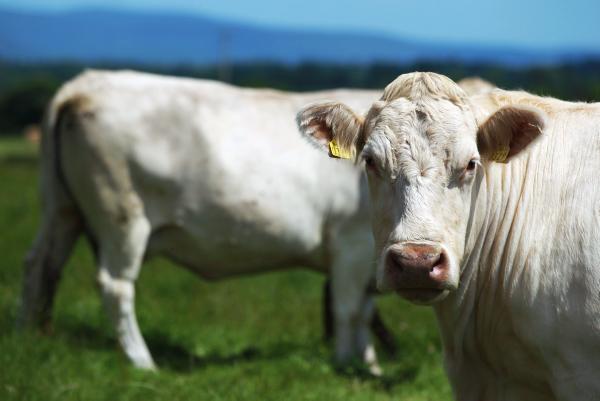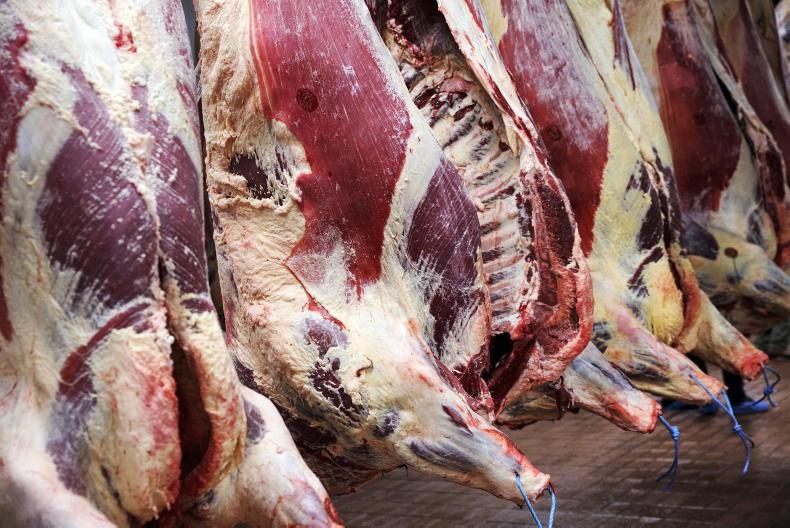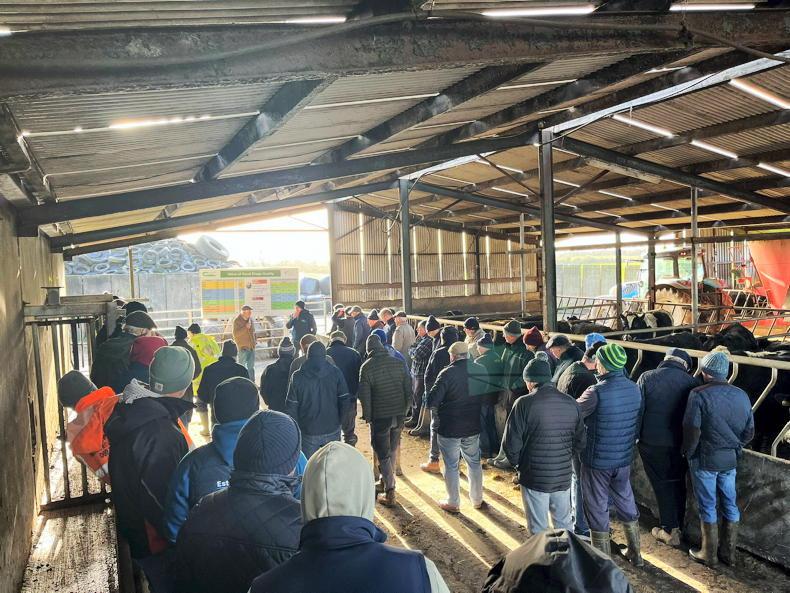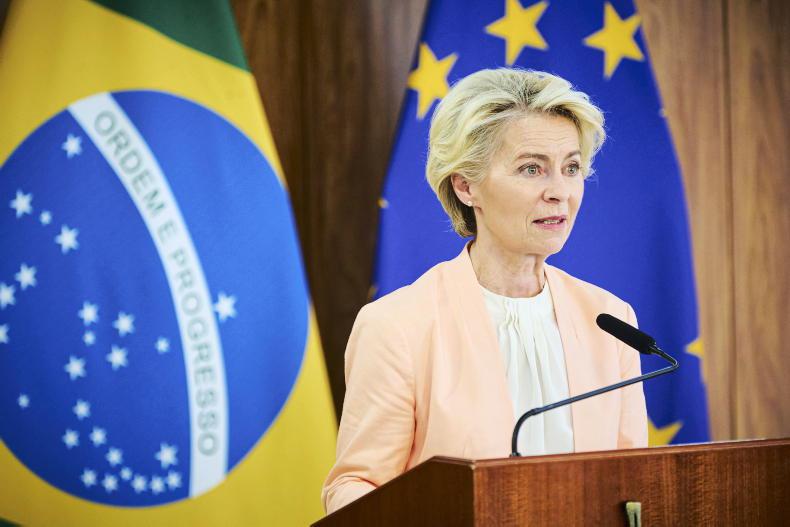Over the past three weeks, we have seen how the decisions of the past have led to the suckler herd today. We have also seen how priorities of suckler farmers differ greatly between those on the east of the country and those west of the Shannon.
However, one common thread among the two sets of farmers we spoke to was leadership. Both sets of farmers agreed that there has been varying levels of leadership from the main stakeholders in the sector.
Here we look at the different stakeholders in the suckler and beef sector, from the policy framework set out by the Irish Government to how our consumers treat beef.
The Department of Agriculture
The lack of a coupled payment in the latest reform of the Common Agricultural Policy (CAP) was a cause of concern for some farmers. The Department of Agriculture opted against the introduction of a coupled payment in favour of trying to incentivise improved breeding techniques and systems.
The Department has previously said that a coupled payment would lead to quality over quantity. This is why a coupled payment was off the agenda.
The introduction of the Beef Technology Adaption Programme (BTAP) and the Beef Genomics Scheme (BGS) is aimed at improving the breeding of Irish suckler and beef herds. The policy of the Department would appear to be aimed at improving breeding which would ultimately lead to better stock and better prices for farmers.
It also points to a number of the recommendations made in the Dowling report on the beef sector. Contracts, it believes, will become a larger part of the beef sector, especially with winter finishers, and also it expects the creation of more producer groups. The Irish Farmers Journal understands that the Department will shortly establish a consultation process on producer groups.
Teagasc
As the country’s main research and advice body, Teagasc has a pivotal role to play in the make-up of the herd in the coming years.
Paul Crosson, research officer with Teagasc, said that the research and advice it offers is “evolution rather than revolution” as it is always has to look at what the market situation is.
Last week in our series, Sligo farmer Trevor Boland commended Teagasc for driving efficiencies on farms. However, Crosson maintains that greater cooperation with bodies who work on promoting and selling beef is also needed.
“It’s about working together,” Crosson said. “What happens outside the farm gate often dictates what happens inside it too,” he added.
Crosson pointed to the likely influx of dairy-bred calves entering the beef sector in the coming years and issued a cautionary note.
“We’re going to see that (more of dairy influence in the beef sector). We’re likely to see more Angus and Hereford – these would be better than black and whites. A major influx of Friesian calves would be difficult. There’s a delicate market for Friesian and continentals. We wouldn’t want it go too much one way.
“Although, if the meat industry tells us that it wants 400,000t of O grade animals, then we need to work towards that and put in place the research and advice that’s required for farmers,” he said.
He concluded by saying that beef and suckler farmers need to create a credible farm plan but also must be willing to change to meet market demands.
“We’re going in the right direction in terms of research but we’re always looking to improve. The dairy industry has a blueprint and we need the same. Farmers need a strong plan where they know when to sell but also use opportunities to hold stock if the market is depressed,” he concluded.
Bord Bia
Bord Bia beef specialist Joe Burke said there is still a need for traditional suckler animals. He added that there are reasons to be positive for the suckler farmer.
With the dairy herd likely to have more of an influence on the shape of the suckler herd in the coming years, Burke maintains that traditional suckler breeding will always be of a higher quality.
“At farm level, cattle that are bred from the suckler herd are significantly more valuable than either pure dairy animals or beef-crosses out of the dairy herd. The suckler animals tend to achieve a higher price per kilo and a heavier weight for age throughout their lifetime,” he said.
Despite having what Burke called “cashflow difficulties”, he said the “national suckler herd is of fundamental importance to Ireland”, in particular to the live export trade.
“There continues to be a strong demand for high quality weanlings from the suckler herd for the live export market,” he explained.
“Feedlot owners in Italy have a preference for young bull and heifer weanlings with very good conformation and growth potential. Other important weanling markets include Spain, Greece, Libya, Tunisia and Morocco. It is worth noting that the prices being commanded by quality Irish weanlings abroad are now on-par with the highest in the market – the French. This would previously not have been achievable but for the improvements in quality, performance, health and reputation in recent years,” he concluded.
Beef processors
Meat Industry Ireland (MII), the umbrella group for the country’s beef processors, is adamant that there is a future for the suckler industry. However, it does recognise that there are problems that need to be addressed.
The suckler herd is the key platform for marketing of grass-fed quality-assured Irish beef. It is important to remember that there are only four EU member states with significant specialist beef cow herds: Ireland, the UK, France and Spain.
A MII spokesperson said: “While the traditional beef breeds (Hereford, Angus) have received much attention in recent times through various marketing initiatives, we believe that all our major beef breeds have a role to play in the future in our national suckler herd. We recognise the importance of the efficiency/productivity characteristics of continental breeds. We believe that with the best genetics within all these breeds, they can all deliver carcases that will meet marketplace specifications and command the best prices.
“The future for Irish beef, and the suckler herd is fundamentally sound, but the challenges in respect of farm profitability do need to be addressed. We understand that the record beef prices of the past few years did not translate into record farmer margins in the beef sector – due to a combination of high input prices and lack of efficiency gains in the sector.
“Adoption of the technologies recommended by, in particular, Teagasc and the ICBF would deliver a more efficient and profitable beef farming sector into the future.
“While the sector is currently experiencing some downward price pressure, let us not forget that prices have been increasing continuously over the last four years,” the spokesperson said.
Retailers
The role of the retailer in the beef and suckler industries has rarely been as to the fore as much as this year. Blame for the falling beef prices has been placed the feet of retailers for demanding specification changes from processors. However, with the retailer being the last point of contact with the consumer, there needs to be stronger relationship between farmer and retailer.
So, with the suckler industry likely to change in the coming years, does the retail sector expect much change? Brian Byrne, head of meat with Tesco, admits that any changes in systems will be felt by consumers even if they are unaware of a farmer changing his or her system.
“There is at a high level a difference between the suckler and dairy herd, especially in terms of the increase in production of young bulls and dairy cow beef. This is a very intricate issue involving the genetics, sex, diet and the farming system by which the animals are reared which would majorly impact the output quality,” Byrne said.
“Customers will not as a rule fully understand the difference between the systems but will be interested in the effects on taste, tenderness and ultimately sustainability environmentally and economically,” he added.
Byrne also said that there is a role for more retailer involvement with shaping the future of the suckler herd and its produce. Although he admitted that he isn’t sure of what direction the industry will take.“This is highly dependent on the system that the cattle come through to market. We would like to be involved in this discussion as one of Ireland’s biggest customers,” he concluded.










SHARING OPTIONS